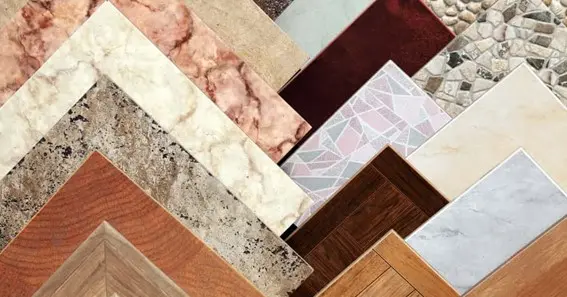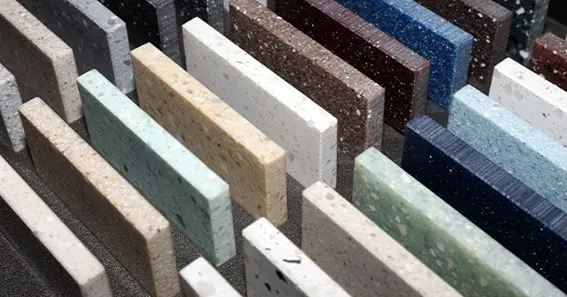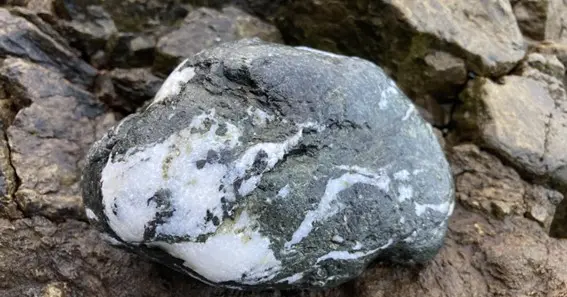What type of rock is marble? Marble is a type of metamorphic rock formed from limestone under high heat and pressure. Marble is a prominent metamorphic rock known for its beauty and durability. High pressure and heat transform it into marble, which has gorgeous veining and a smooth feel. This metamorphic alteration improves the rock’s characteristics, making it useful for architecture, sculpting, and interior design. In this article we discuss about what type of rock is marble and more about it.
What Type Of Rock Is Marble?
Marble is a type of metamorphic rock formed from limestone under high heat and pressure. This rock type is Metamorphic, like marble, which was heated and pressed together. Big changes in temperature, pressure, or chemically active fluids can turn igneous or sedimentary rocks into metamorphic rocks.
Calcite (calcium carbonate), a volcanic rock, creates marble. Some rocks recrystallize into others. Calcite crystals in limestone grow and rearrange under heat and pressure. Recrystallization makes calcium carbonate stronger and longer-lasting. This is today’s marble. In the metamorphic process, limestone impurities like clay, silt, and iron oxides give marble characteristic colors and patterns. These impurities give the stone its veining and streaking, which artists love. The marble looks and feels different during metamorphism due to varying heat and pressure.
Things You Ought To Understand About Marble

Marble is one of art and architecture’s most beautiful and valuable metamorphic rocks. To use it wisely, you must understand its characteristics, types, and care needs. After know about what type of rock is marble, now explore about this unique substance.
Formation Process
If you already know what type of rock is marble, you must know natural metamorphism turns rocks into marble. Limestone deep in the Earth’s crust gets heated and compressed. In this environment, limestone calcite crystals re-crystallize, creating a new structure. This process turns limestone into marble over millions of years. Change can occur in tectonic activity-rich and mountain-building zones.
Personality And Appearance
Marble’s smooth surface and variety of colors make it popular. It’s usually white but might be black, green, pink, or blue. Rocks and impurities during metamorphism create unique veining patterns. These lines, little or large, highlight the surface. Smoothed marble shines and shows off its natural beauty and depth.
Architectural And Sculptural Uses
People have used marble for architecture and art for millennia. Because it’s easy to work with, artists and builders may carve delicate features and smooth, attractive surfaces. Angel David by Michelangelo and Venus de Milo are famous marble masterpieces. Famous marble constructions include the Parthenon and the Taj Mahal. Because it’s durable and attractive, modern structures employ this material for flooring, countertops, and decorations.
Marble Varieties

Each marble type has unique properties and uses. An iconic type of marble is Carrara from Italy. Its beautiful white or blue-gray hue and exquisite grain make it valuable. Calacatta marble, with its wide veins and sharp contrast, is another high-end kind. Emperador marble is ideal for high-end spaces due to its varied dark hues and intricate veining. Due to their properties, diverse marbles suit diverse designs and functions.
Physical Traits
Marble is soft, making it easier to mold and cut than other stones. Its softness also makes it simpler to scratch and damage. Weak material might discolor from improper sealing and maintenance. Due to its density and composition, marble conducts heat well, making it popular for kitchen and bathroom counters and flooring. When choosing marble for diverse tasks, pay attention to its physical properties.
Maintain
Marble surfaces need daily cleaning to stay beautiful. Use a pH-balanced marble cleanser to protect the stone. Avoid lemon juice and vinegar, which can damage marble. Marble stays spotless and water-free with regular sealing. You may need professional restoration for significant scratches or damage. Regular marble maintenance extends its lifespan and improves its appearance.
Environmental Impacts

Marble mining and processing can change the planet. Marble quarries extract a lot of rock, breaking habitats and changing the landscape. They also waste energy and produce rubbish. To reduce these consequences, quarrying should recycle garbage and use less energy. Marble companies can be environmentally friendly through responsible sourcing and licensing schemes.
Marble Vs. Glass
Marble and granite are popular floor and countertop materials, but they differ. Ice-cooled magma becomes granite, a more challenging, longer-lasting volcanic rock. Less air enters, making it difficult to scratch and damage. However, acidic substances destroy marble more easily. Marble appears better and is easier to work with than granite for several uses. Granite is preferable for high-traffic areas and practical usage since it lasts longer.
Historical Importance
If you already read what type of rock is marble, you should know art and architecture have traditionally used marble. The Greeks and Romans employed marble in public buildings, statues, and cathedrals to symbolize their wealth and power. Michelangelo and Bernini elevated marble in Renaissance sculptures. Due to its history, marble is valuable and requires talent.
Conclusion
Marble, a metamorphic rock, looks and feels better due to an unusual crustal alteration. Limestone becomes marble, a unique mix of natural beauty and human talent. Marbling’s history, features, and maintenance are necessary to comprehend its use in old and current designs. Marble still signifies luxury and artistic success in enormous statues and gorgeous homes. In above we discuss about what type of rock is marble and explore more about it.
FAQ
Where Does Marble Come From?
High pressure and heat turn limestone into marble. The calcium carbonate in limestone solidifies.
Which Type Of Building Uses Marble?
Due to its durability and beauty, marble is famous for its construction flooring, countertops, wall coverings, and ornamental features.
What Is The Best Technique To Clean Marble?
Avoid vinegar and lemon juice, which can damage marble’s sheen and surface, and use a pH-balanced cleanser.
What Kinds Of Marble Are Most Common?
Carrara, a white or blue-grey marble; Calacatta, with massive veins; and Emperador, a brown marble with many minute patterns, are common.
Does Marble Protect The Environment?
Marble mining destroys habitats and creates garbage. Buy responsibly and quarry sustainably to reduce these effects.
Sources:










